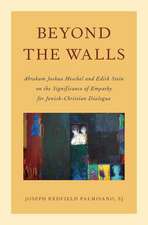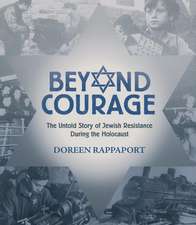Caught by History: Holocaust Effects in Contemporary Art, Literature, and Theory
Autor Ernst van Alphen, Balen Limba Engleză Hardback – 31 dec 1997
In the face of strong moral and aesthetic pressure to deal with the Holocaust in strictly historical and documentary modes, this book discusses why and how reenactment of the Holocaust in art and imaginative literature can be successful in simultaneously presenting, analyzing, and working through this apocalyptic moment in human history.
In pursuing his argument, the author explores such diverse materials and themes as: the testimonies of Holocaust survivors; the works of such artists and writers as Charlotte Salomon, Christian Boltanski, and Armando; and the question of what it means to live in a house built by a jew who was later transported to the death camps. He shows that reenactment, as an artistic project, also functions as a critical strategy, one that, unlike historical methods requiring a mediator, speaks directly to us and lures us into the Holocaust.
We are then placed in the position of experiencing and being the subjects of that history. We are there, and history is present—but not quite. A confrontation with Nazism or with the Holocaust by means of a re-enactment takes place within the representational realm of art. Our access to this past is no longer mediated by the account of a witness, by a narrator, by the eye of a photographer. We do not respond to a re-presentation of the historical event, but to a presentation or performance of it, and our response is direct or firsthand in a different way. That different way of “keeping in touch” is the subject of inquiry that propels this study.
In pursuing his argument, the author explores such diverse materials and themes as: the testimonies of Holocaust survivors; the works of such artists and writers as Charlotte Salomon, Christian Boltanski, and Armando; and the question of what it means to live in a house built by a jew who was later transported to the death camps. He shows that reenactment, as an artistic project, also functions as a critical strategy, one that, unlike historical methods requiring a mediator, speaks directly to us and lures us into the Holocaust.
We are then placed in the position of experiencing and being the subjects of that history. We are there, and history is present—but not quite. A confrontation with Nazism or with the Holocaust by means of a re-enactment takes place within the representational realm of art. Our access to this past is no longer mediated by the account of a witness, by a narrator, by the eye of a photographer. We do not respond to a re-presentation of the historical event, but to a presentation or performance of it, and our response is direct or firsthand in a different way. That different way of “keeping in touch” is the subject of inquiry that propels this study.
Preț: 476.26 lei
Preț vechi: 587.98 lei
-19% Nou
Puncte Express: 714
Preț estimativ în valută:
91.13€ • 95.39$ • 75.85£
91.13€ • 95.39$ • 75.85£
Carte tipărită la comandă
Livrare economică 31 martie-14 aprilie
Preluare comenzi: 021 569.72.76
Specificații
ISBN-13: 9780804729154
ISBN-10: 0804729158
Pagini: 248
Dimensiuni: 152 x 229 x 23 mm
Greutate: 0.52 kg
Ediția:1
Editura: Stanford University Press
Colecția Stanford University Press
ISBN-10: 0804729158
Pagini: 248
Dimensiuni: 152 x 229 x 23 mm
Greutate: 0.52 kg
Ediția:1
Editura: Stanford University Press
Colecția Stanford University Press
Recenzii
"Caught by History is a finely balanced, scholarly narrative of van Alphen's encounters with Holocaust literature, testimony, and art. It brings to our attention little-known artists, and tackles convincingly the bothersome issue of the validity of art in the face of catastrophe, and particularly this catastrophe." —Geoffrey Hartman, Yale University.
Textul de pe ultima copertă
“Caught by History is a finely balanced, scholarly narrative of van Alphen’s encounters with Holocaust literature, testimony, and art. It brings to our attention little-known artists, and tackles convincingly the bothersome issue of the validity of art in the face of catastrophe, and particularly this catastrophe.” —Geoffrey Hartman, Yale University.
Descriere
In the face of strong moral and aesthetic pressure to deal with the Holocaust in strictly historical and documentary modes, this book discusses why and how reenactment of the Holocaust in art and imaginative literature can be successful in simultaneously presenting, analyzing, and working through this apocalyptic moment in human history.















